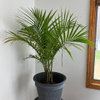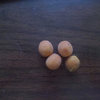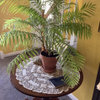Neanthe bella - repotting question
jules7ky
14 years ago
Related Stories

HOUSEPLANTS10 Top Plants to Grow Indoors
Brighten a room and clean the air with a houseplant that cascades artfully, stretches toward the ceiling or looks great on a wall
Full Story
HOUSEPLANTSMeet a Palm That's Fine With Fluorescent Light
Get the look of the tropics without the full-on sun and high humidity — parlor palm tolerates regular indoor conditions with aplomb
Full StoryMore Discussions









garyfla_gw
jules7kyOriginal Author
Related Professionals
Havre de Grace Landscape Architects & Landscape Designers · Saint Louis Park Landscape Architects & Landscape Designers · Willowick Landscape Architects & Landscape Designers · Bristol Landscape Contractors · Cockeysville Landscape Contractors · East Hanover Landscape Contractors · Lake Worth Landscape Contractors · Mashpee Landscape Contractors · Oakland Landscape Contractors · Parker Landscape Contractors · Post Falls Landscape Contractors · Forest Hill Landscape Contractors · Dayton Window Contractors · Goulds Window Contractors · Redwood City Window Contractorsjules7kyOriginal Author
tropicalzone7
Buglover3599_hotmail_com
tropicalzone7
NoVaPlantGuy_Z7b_8a